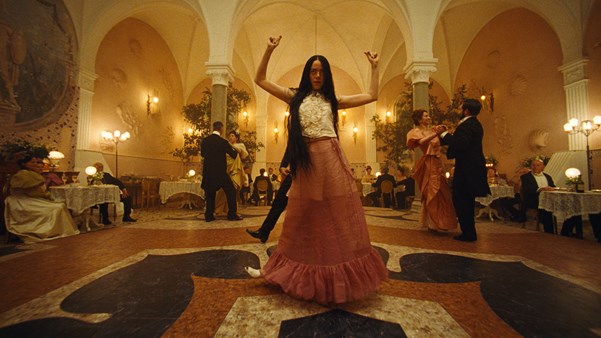Modern horror has become obsessed, to a parodic degree, with embedding trauma into its narratives. Here, Billie Walker explores how Ti West’s gleefully gruesome movies both mock, and undermine, so-called ‘elevated horror’.

Maxine (Mia Goth) is back and she’s determined to make it big in Hollywood! This summer, Ti West rounds off his bloody trilogy by returning to Maxine, the sole survivor of the farmhouse massacre in X (2022), who believes she’s destined to be a star, the only problem is the people who stand in her way.
MaXXXine begins at the wannabe actress’ first movie audition. Her chance for fame starts with the instruction: ‘Through her trauma, [she] addresses the lens directly’. It’s a moment that reminds genre fans of horror’s recent obsession with psychological damage. Of course, some – like Midsommar (2019) and The Babadook (2014) – handle emotional topics with acute precision, offering a chance to glimpse into the darkest corners of the mind, while others, such as Smile (2022), wield trauma with all the delicacy of a mallet. This fascination with trauma has ballooned since the 2010s, and has led to the phrase ‘elevated horror’ being batted around – and widely scoffed at. (There is a pretentious undertone to it: those who use the term imply that schlocky horror movies are of lower artistic value.) The films that try to join this prestige-courting canon are either mockingly bestowed the title or labelled exploitative failures.

It’s clear Ti West won’t let MaXXXine fall into either category. The final entry in his trilogy is an ode to the video nasty, a term coined for the low-budget, controversial and extremely violent exploitation horror films that bypassed the censors in a regulation loophole in the 1980s. MaXXXine is set in the Eighties, as horror gains large studio interest. We can sense that, within the context of the film itself, the genre is on the cusp of becoming mainstream. While it previously shared space with pornography on the top shelves in the seediest rental stores, like the one Maxine’s friend Leon (Moses Sumney) runs, horror is being propelled beyond its seedy, straight-to-video recent past and onto the big screen.
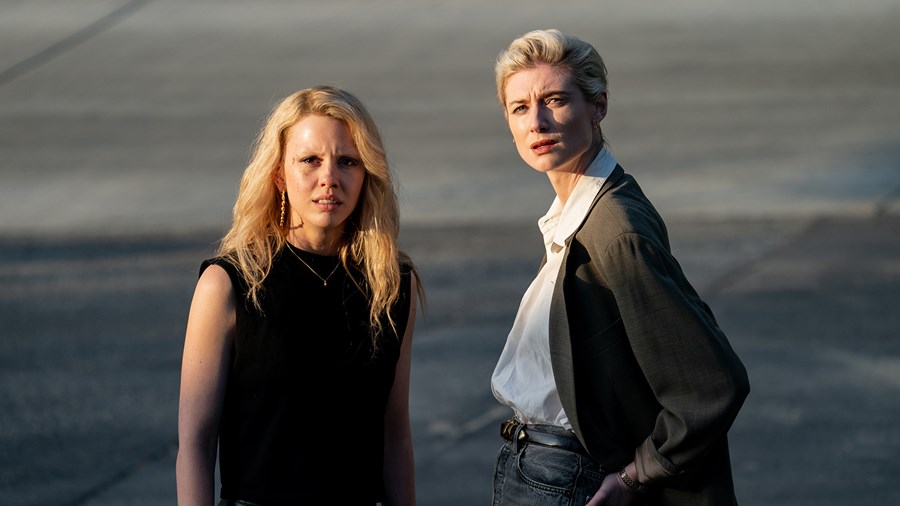
MaXXXine (2024)
When Maxine books the acting gig, the film’s director Elizabeth Bender (Elizabeth Debicki) takes her on a studio tour, and clarifies that her movie, The Puritan II, is more cinematic than video nasties, which are a thing of the past. Maxine is uninspired by this speech. In fact, she’s completely distracted by her own story, the violence she’s already experienced and how it continues to threaten her future. West shares Maxine’s disinterest in horror’s supposed evolution, which is made apparent by the film’s attitude towards Elizabeth – and The Puritan II’s – reticence to show excessive bloodlust. It’s clear West’s inclusion of this character attempts to identify, then ridicule, this genre mode. Elizabeth’s approach to her movie represents the now commonplace trauma narratives that are starting to paint the picture of horror’s future. West revels in the gore Elizabeth makes excuses for: he doesn’t need to explain it away as theatrics, it’s just good fun.
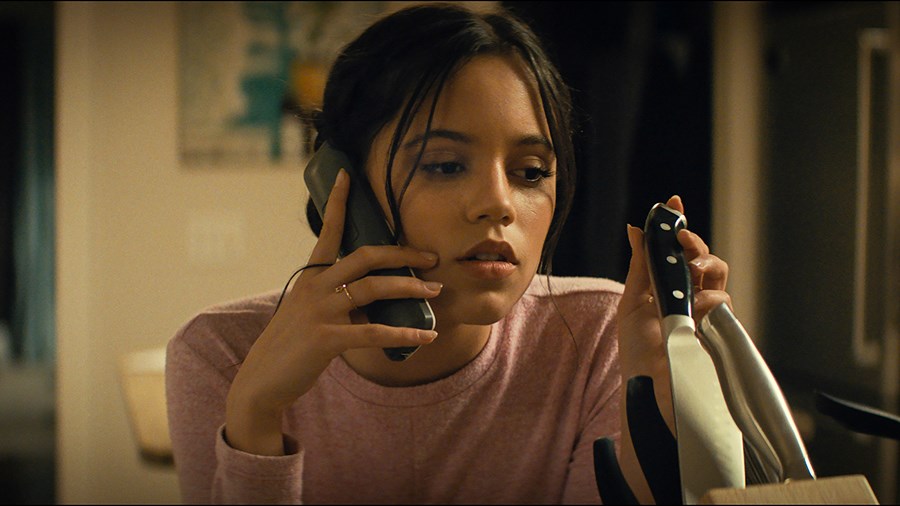
Scream (2022)
MaXXXine is not the only film to comment on horror’s trauma obsession and controversial new ‘elevated horror’ subgenre. Scream (2022), the fifth instalment in the franchise, returned with a pointed joke at the term, riffing on the opening of Wes Craven’s 1996 original (1996). The receiver of the ominous phone call is no longer Casey (Drew Barrymore), but Tara (Jenna Ortega). The killer on the other end of the line asks Tara very similar questions to Casey, particularly ‘what’s your favourite scary movie?’ He mocks Tara for her choice (‘complex emotional and thematic underpinnings [over] wall-to-wall jumpscares’), saying it sounds boring.
Neither Scream nor MaXXXine are actively lobbying against horror movies that explore mental health or grief, but they are telling their audiences they’ve come to the wrong place if that’s what they’re looking for. These movies aren’t those kinds of horror movies. West has continuously chosen to make entertaining, gory flicks, rather than intensely layered meditations. Each film in his trilogy – X, Pearl (2023) and MaXXXine – demonstrates his love and commitment to horror in its simplest form.
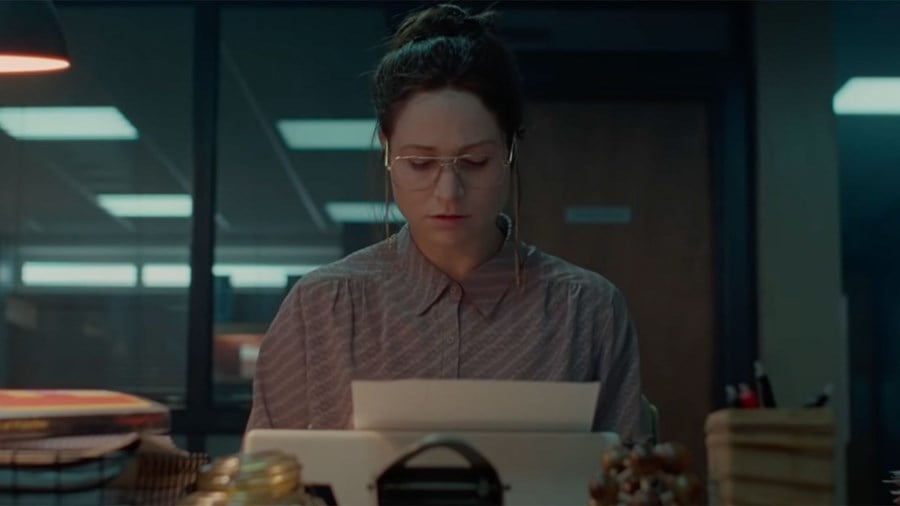
Censor (2021)
Censor (2021) is another recent film that questions horror’s current trauma obsession – while looking back at the video nasty – though it does so in a much more serious register. Prano Bailey-Bond’s directorial debut follows Enid (Niamh Agar), whose job at the British Board of Film Classification is to watch and certify the gruesome video nasties. But among the red corn syrup and amputated limbs, Enid is also searching for the face of her long lost sister. Looking for answers in the tapes is fruitless. Through Enid’s study of the cassettes, Bailey-Bond examines our love of horror and specifically the catharsis it offers: it allows us to safely live out worst-case-scenario fantasies. But Censor also serves as a reminder that there are no definitive answers in the world of the video nasty. The film is in conversation with horror’s controversial past, whereas MaXXXine feels more like a plea to return to the chaos of the video nasty, and to find entertainment in its random violence.

MaXXXine (2024)
Instead of West’s final instalment becoming a reckoning with Maxine’s inner demons – which the horror genre is wont to do of late – the soon-to-be star is plagued by external factors. Namely the private detective (Kevin Bacon) who knows about the massacre at the Texan farmhouse, and an anonymous, leather-gloved murderer. West’s solution to each potential trauma that rears its ugly head is, in true video-nasty fashion, a bloody one. MaXXXine repeatedly descends into over-the-top gore, with buckets of blood and at least one exploding head. The best example of West’s penchant for old-school chills and spills comes when Maxine is threatened in a dark alleyway. She quickly turns the tables on her gun-brandishing assailant by forcing him to suck on his weapon. The scene escalates to a level of extreme violence that’s right at home in the nasties West adores.
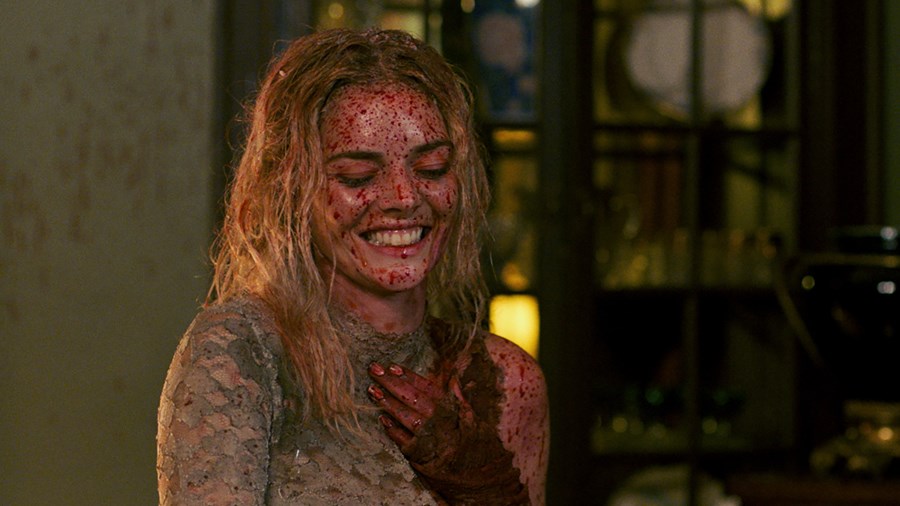
Ready or Not (2019)
MaXXXine’s unwillingness to get bogged down in emotions, favouring blood baths over psychology, shows West’s refusal to ‘elevate’ his trilogy. The titular starlet herself stands in stark contrast to contemporary horror heroines, such as Grace in Ready or Not (2019) and Thomasin in The Witch (2019), who have become a mainstay of the ‘good for her’ narrative, an internet-named subgenre that celebrates women who wreak revenge on people – usually men – who have wronged them. Unlike Grace and Thomasin, Maxine is not the innocent protagonist forced to take violent measures, she has always committed whatever crime she needed to survive. She’s a scream queen who coldly refuses to react with the emotional gravitas we have come to expect, and her journey matches this. Instead of wallowing in self-reflection, she crescendoes into absurdity.
To enjoy MaXXXine, much as we have enjoyed X and Pearl, we must leave the expectations of horror’s current landscape at the door and allow ourselves to sink into the violent exploitation of horror’s past. In West’s latest film, every kill is exaggerated, and the blood is as bright and sleazy as Maxine’s Hollywood future. It’s a fun, violent end to a trilogy that has prioritised gore above all. Most of all, it showcases, one more time, West’s undying love for blood, guts and absolute carnage.
WATCH MAXXXINE IN CINEMAS



